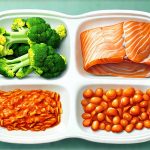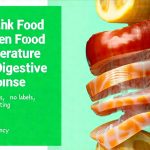Have you ever savored an icy popsicle on a hot day only to find yourself feeling…off? Perhaps a brain freeze wasn’t the entire story, but something more akin to mild nausea lingered after the initial chill subsided. Or maybe that large glass of iced water left your stomach churning instead of refreshing you. This seemingly peculiar reaction – feeling nauseated after consuming very cold foods or drinks – is surprisingly common, and while it’s rarely serious, understanding why it happens can alleviate concern and help you enjoy those cool treats without discomfort. It’s a phenomenon experienced by many, yet often dismissed as simply being “sensitive to the cold,” but there’s actually quite a bit of physiological explanation behind it.
The sensation isn’t always about the temperature itself; it’s more about how your body reacts to that rapid temperature change within your digestive system. Our bodies strive for internal homeostasis, meaning maintaining a stable internal environment. When something drastically cold enters our mouths and travels down the esophagus into the stomach, it disrupts this balance, triggering a cascade of neurological and physiological responses designed to restore equilibrium. These responses can sometimes manifest as nausea or discomfort, even if you generally enjoy cold foods. The degree of sensitivity varies greatly from person to person, making it a complex experience with many contributing factors.
The Role of the Vagus Nerve
The vagus nerve is often at the heart of this reaction. It’s one of the longest cranial nerves in the body and plays a critical role in regulating numerous bodily functions, including digestion. – Controlling heart rate – Managing blood pressure – Influencing gut motility. When something very cold hits the back of the throat or esophagus, it can stimulate the vagus nerve. This stimulation sends signals to the brain, which interprets them as discomfort, sometimes leading to feelings of nausea. Think of it like a temporary miscommunication between your body and brain; the cold isn’t inherently harmful, but the signal sent triggers a protective response. The intensity of this response depends on several factors including individual sensitivity and how quickly the cold stimulus is applied.
The vagus nerve essentially acts as a communication highway between the gut and the brain. A sudden temperature drop can cause rapid constriction and dilation of blood vessels in the digestive tract, also triggered by vagal stimulation. This vascular shift can be interpreted by the brain as a sign of distress, further contributing to nausea. It’s similar to what happens during motion sickness – your body senses conflicting signals about its position and movement, resulting in discomfort. In this case, the conflicting signal is between temperature expectations (a relatively warm digestive system) and the sudden cold shock.
It’s important to note that this isn’t necessarily a sign of an underlying health problem. For many people, it’s simply a physiological quirk. However, if nausea is severe or persistent, even after consuming moderately cold foods, it’s worth discussing with a healthcare professional to rule out any other potential issues. Perhaps looking into screening options would be beneficial if this is a recurring issue.
Contributing Factors & Individual Sensitivity
Several factors can influence your susceptibility to nausea after very cold meals. Genetics play a significant role; some individuals are naturally more sensitive to temperature changes than others. – Existing digestive conditions: People with Irritable Bowel Syndrome (IBS) or other gastrointestinal sensitivities may be more prone to experiencing this type of reaction. – Hydration levels: Being dehydrated can exacerbate sensitivity, as there’s less fluid in the system to buffer the cold shock. – Speed of consumption: Quickly consuming very cold foods or drinks intensifies the effect compared to slowly savoring them. – Stomach emptying rate: A slower stomach emptying rate may prolong the exposure of the digestive tract to the cold stimulus, increasing the likelihood of nausea.
The speed at which you consume a cold item is paramount. The faster the intake, the more abrupt the temperature change in your mouth and esophagus, leading to greater vagal nerve stimulation. Slowly sipping or nibbling on something icy allows your body to gradually adjust, minimizing discomfort. Consider how quickly you usually drink iced beverages – if it’s downing a large glass rapidly, that explains why nausea is more likely. Conversely, slowly enjoying a small scoop of ice cream is less likely to cause the same effect.
Furthermore, the state of your digestive system at the time also matters. If you’re already experiencing bloating or discomfort, adding a very cold stimulus can amplify those sensations and increase the probability of nausea. A healthy digestive system generally handles temperature fluctuations better than one that’s compromised by inflammation or other issues. It’s important to remember that feeling bloated can often exacerbate these sensitivities.
The Gut-Brain Connection & Nausea Pathways
The link between the gut and brain is incredibly strong, impacting not just digestion but also mood and overall well-being. This gut-brain axis plays a significant role in how we perceive nausea. When the vagus nerve sends signals to the brain about the cold stimulus, it doesn’t simply register as temperature; it triggers a complex neurochemical response involving neurotransmitters like serotonin. Serotonin is heavily involved in regulating nausea and vomiting. A surge of serotonin can activate pathways leading to feelings of queasiness.
The area postrema, located in the brainstem, is another key player. This region acts as a “chemoreceptor trigger zone,” meaning it detects toxins or harmful substances in the bloodstream and initiates a vomiting reflex if necessary. While cold isn’t inherently toxic, the rapid temperature change can sometimes be interpreted by the area postrema as a potential threat, triggering nausea.
Understanding these pathways helps explain why nausea after cold foods is often accompanied by other symptoms like dizziness or lightheadedness. The brain responds to the perceived distress signal from the gut by activating multiple physiological systems, leading to a cascade of effects beyond just feeling sick to your stomach.
Mitigation Strategies & Practical Tips
Fortunately, there are several steps you can take to minimize nausea after very cold meals: 1. Slow down consumption: Sip or nibble instead of gulping. 2. Moderate temperature: Allow food/drinks to warm up slightly before consuming. 3. Stay hydrated: Proper hydration helps buffer the cold shock and supports digestive function. 4. Avoid on an empty stomach: Consuming cold items after a meal can lessen the impact, as your digestive system isn’t as sensitive. 5. Consider smaller portions: Reduce the amount of very cold food/drink you consume at once.
If you know you’re particularly sensitive, proactively adjusting your habits is the most effective strategy. For example, if iced coffee consistently causes discomfort, try switching to a warmer alternative or adding more milk to dilute the coldness. Paying attention to your body’s signals and making small adjustments can significantly improve your enjoyment of cool refreshments.
It’s also important to remember that this type of nausea is usually temporary and resolves on its own. If you do experience symptoms, resting and avoiding further cold stimuli will typically help alleviate discomfort. However, if the nausea persists or becomes severe, seeking medical advice is always recommended to rule out any underlying health concerns. You may want to consider why you feel bloated after supplements as well, if this is a frequent issue for you. Remember, understanding the physiological mechanisms behind this phenomenon empowers you to manage it effectively and enjoy your favorite treats without worry. If you suspect probiotics are playing a role, consult with your doctor. Lastly, be mindful of how quickly you eat—eating too quickly can often contribute to digestive discomfort.


















